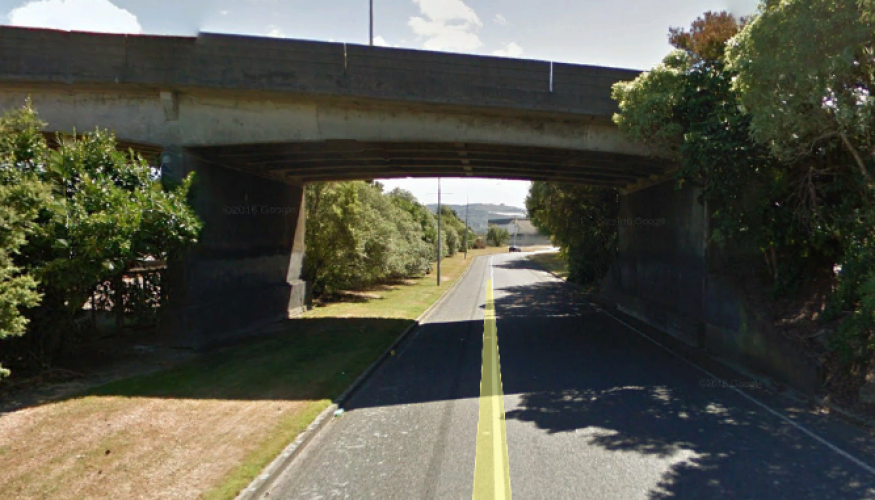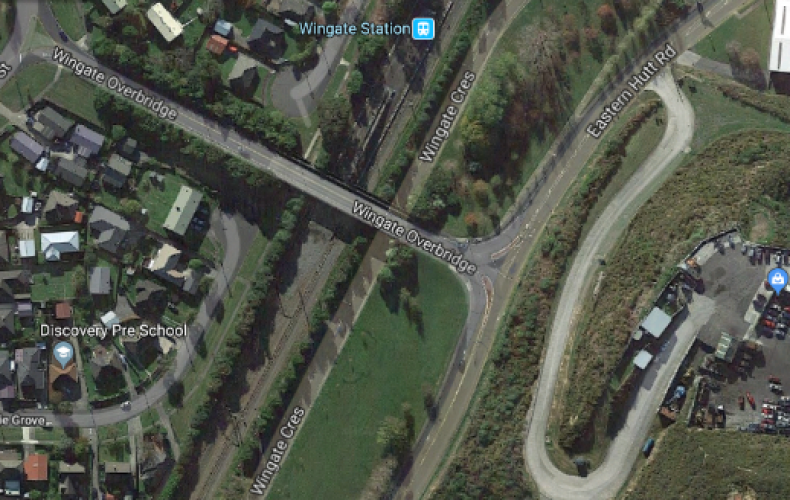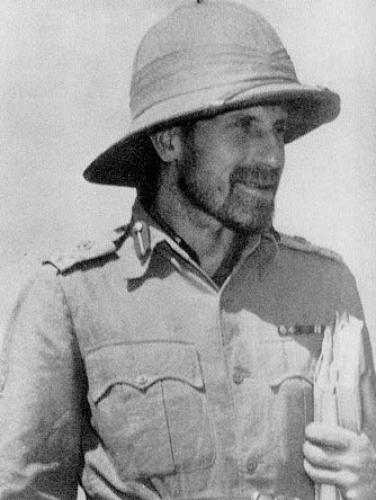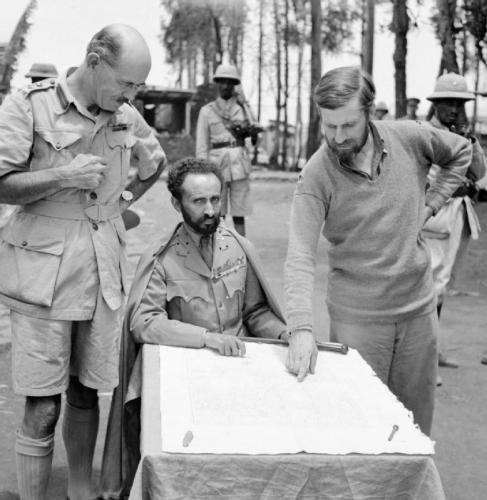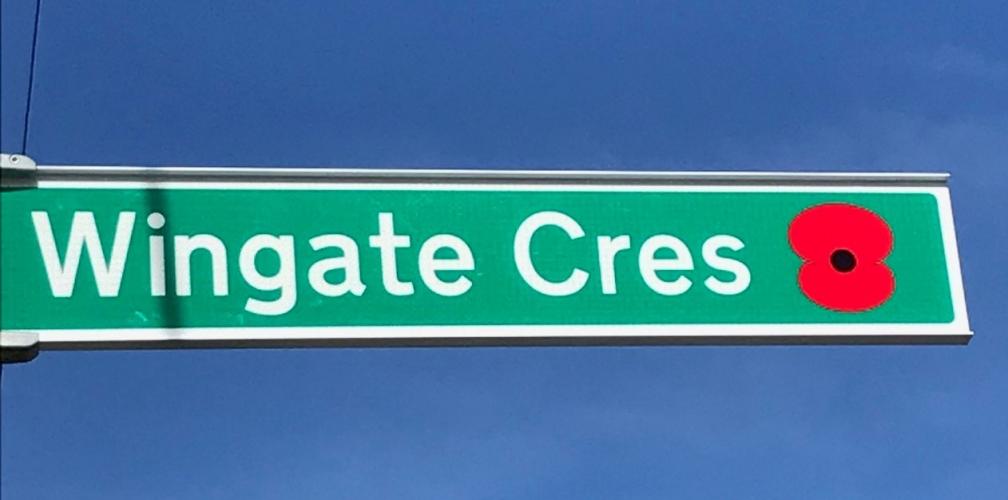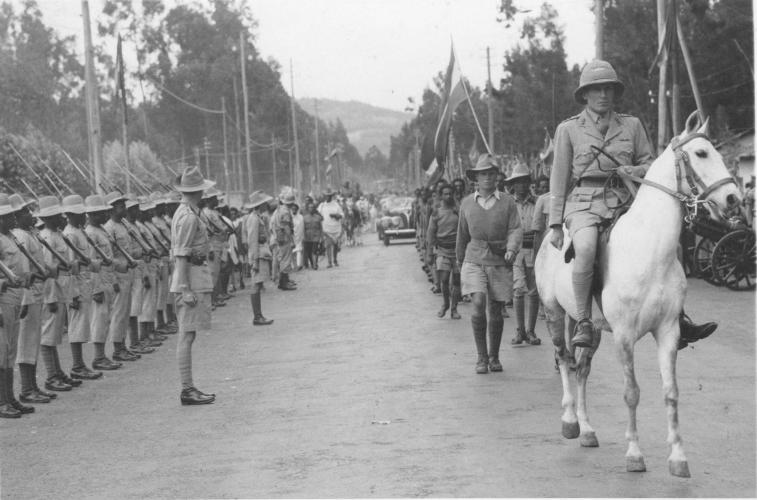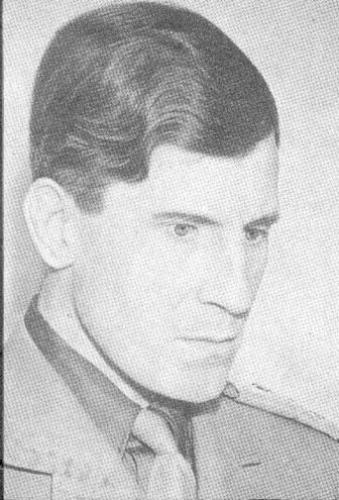153 Wingate Crescent Lower Hutt, Street scene including Wingate Overbridge
Reason for the name
This Taita, Lower Hutt Street was named in honour of Major General Orde Charles Wingate DSO & Two Bars. Wingate was a senior British Army officer, known for his creation of the Chindit deep-penetration missions in Japanese-held territory during the Burma Campaign of World War II.
Orde Charles Wingate (26 February 1903 – 24 March 1944) was an exponent of unconventional military thinking and the value of surprise tactics. Assigned to Mandatory Palestine, he became a supporter of Zionism, and set up a joint British-Jewish counter-insurgency unit. Under the patronage of the area commander Archibald Wavell, Wingate was given increasing latitude to put his ideas into practice during World War II. He created units in Abyssinia and Burma. At a time when Britain was in need of morale-boosting general ship, Wingate attracted British Prime Minister Winston Churchill's attention with a self-reliant aggressive philosophy of war, and was given resources to stage a large-scale operation. The last Chindit campaign may have determined the outcome of the Battle of Kohima, although the offensive into India by the Japanese may have occurred because Wingate's first operation had demonstrated the possibility of moving through the jungle. In practice, both Japanese and British forces suffered severe supply problems and malnutrition.
Wingate was killed in an aircraft accident late in the war. A continuing controversy over the Chindits has centred on the casualty rate the force suffered, especially from disease. Wingate believed that resistance to infection could be improved by inculcating a tough mental attitude, but medical officers considered his methods unsuited to a tropical environment.
Author: The Poppy Places Trust
With a background in exploration, guerrilla fighting in Palestine and intelligence operations. He was sent by General Wavell (commanding in the Middle East) to Sudan in 1940 to help the Ethiopian nationalists and direct their revolt against the Italians. As the unrelenting leader of Gideon Force, he made use of bluff, manoeuvre and unorthodox tactics. Following the liberation of Ethiopia, he was seriously ill and made an attempt at suicide, but after a convalescence he was called to India by Wavell, who appreciated his unconventional approaches.
For Burma, he proposed Long Range Penetration Groups to conduct guerrilla operations behind the Japanese lines. A five-month test of this Chindit Concept in 1943 earned him a second bar to his Distinguished Service Order, though his losses in men and equipment were high. Churchill, ever delighted by imaginative fighters, took Wingate with him to the Quebec Conference in 1943. Although some opposed the idea, he went back to India with authorization to conduct long-range offensives under Lord Mountbatten, the Supreme Commander in Southeast Asia, as part of a campaign to recapture Burma.
In February 1944, his Chindits were dropped deep in Burma, but Wingate himself was killed in an air crash in India in March. He was a controversial figure, an intense, mercurial man who loved to innovate and lead but who resented higher authority. He held a deep religious conviction that he was an instrument of a greater power, and he seemed infused with a mythical, almost fanatical quality. General Sir William Slim, who knew him both in Africa and in India, described him as "strange, excitable, moody creature, but he had a fire in him. He could ignite other men."
He was one of nine men who died in the crash of a U.S. Army Air Corps transport plane in India on March 25, 1944. They were originally buried in India, but moved to a common grave in Section 12 of Arlington National Cemetery on November 10, 1950.
A considerable amount of mystery has always surrounded the death of the Chindit Commander. From authentic details supplied by Bill Lawrence, Lewisham, the subsequent happenings were also unusual. He writes:
A few years ago a man, on seeing my Association blazer badge, asked me if I knew there was a grave in Chariton Cemetery, SE London, with the name of Major-Gen. Orde Wingate, RA, on it. He gave me its position and when I visited the cemetery I saw the headstone with the inscription together with the date of death 24th March, 1944. On requesting permission to take photographs the Town Clerk of Greenwich refused, it being against the family’s wishes. A short while afterwards I received a letter from General Wingate’s brother, Judge W. Grant Wingate, QC, and the information he then gave was surprising to say the least. Judge Wingate said:
“The history of the matter is this. The plane carrying my brother and his ADC Burrow and several Americans crashed on a mountain top in Burma. An expedition was sent to find the spot at once. They found scattered remains unidentifiable, collected these and buried them upon a mound on which they placed a bronze plate (I have it) engraved with the names of all who perished in the plane. In many ways it would have been fitting to have left this interment undisturbed but in due course the British War Graves authorities removed the remains to lmphal. Later, without consent or knowledge of my family the remains were again dug up and removed to Arlington Cemetery, Washington, USA. This was done upon an agreement made between the British and American Courts, that where bodies were buried unidentified in a mass grave the Americans had the right to have re-interment in the States if there were more Americans than British concerned. Accordingly such remains (and none, I repeat, were identifiable) of my brother as may have been found and interred with the rest are now in Arlington Cemetery.
We were represented at the re-interment ceremony at Arlington by a personal friend of mine who happened to be First Secretary at the British Embassy in Washington at the time. We had only 24 hours’ notice of the re-interment. The manner in which this matter was handled was the subject of a complaint taken up on our behalf by Winston Churchill but nothing could be done. We felt and feel that it was quite inappropriate for General Wingate to be buried in the States. However, I don’t suppose he would have minded as much as his family.
It follows from what I have said that no remains of my brother were buried in Charlton Cemetery. It is a memorial inscription only. There is another memorial of a more impressive character in the North Porch of Chariton House School Chapel.”


